Sure, we know people love the F-14 Tomcat and many consider it the best Navy fighter jet ever – and a strong case can be made for that. However, why not also consider the F/A-18 Hornet which also has made some serious Navy history?
Perhaps the most capable, most contributive fighter in US Navy history is the F/A-18 Hornet. The Hornet, which mostly replaced the iconic F-14 Tomcat, has been in service with the Navy since 1984. And thanks to frequent upgrades, the Hornet is still relevant and expected to remain in service for decades to come.
F/A-18 Hornet: A History
The F/A-18 Hornet is a twin-engine, supersonic, all-weather, multirole fighter; it can do a bit of everything – and has done a bit of everything, from air superiority, to air-to-ground, to reconnaissance.
But the vaunted jet was almost scrapped before ever entering service in the first place; the Air Force actually said ‘no’ to the F/A-18.
LWF
In the 1970s, the Air Force solicited bids for its Lightweight Fighter (LWF) program. The LWF was intended to “spur the development of an aircraft that satisfied the energy-maneuverability theory.”
“The energy-maneuverability theory,” I wrote in this publication not too long ago, “can be distilled to one basic formula: Ps – V (T-D/W). Simply put, the formula reliably predicts aircraft performance. And those predictions indicated that excessive weight would have debilitating consequences on the maneuverability of an aircraft.” What the Air Force wanted, ultimately, was a jet capable of “fast transients,” or “quick changes in speed, altitude, and direction. The result would be a superior fighter, capable of gaining or losing energy quickly, hence out-turning an opponent.”
Well, the prototype of the F/A-18, the YF-17, was entered in the LFW program – losing to the YF-16, which has since become the vaunted F-16 Fighting Falcon. The F-16 won on account of possessing “superior acceleration, endurance, turn rates, and climb rates relative to the YF-17.”
And yet, the Navy, who had observed the LFW competition, was drawn to the YF-17. The jet was clearly capable while featuring the two engines that the Navy then required (for the sake of redundancy during catapult-launcher carrier takeoffs).
Further, “the Navy didn’t need a pure air combat fighter, capable of out-turning everything else in the skies. So, the YF-17’s failure to keep pace with the YF-16 wasn’t disqualifying.” The Navy made some tweaks and the F/A-18 was the result.
Now, despite the F-16’s superior agility, the F/A-18 is entirely capable, thanks to an excellent thrust-to-weight ratio, a fly-by-wire system, and leading-edge extensions.
The Hornet’s wing was designed with a 20-degree sweep to the leading edge; meanwhile, the trailing edge is straight. The wing also features full-length leading edge flaps, whereas the trailing edge features full-length ailerons.
Adding to the F/A-18’s maneuverability are canted vertical stabilizers, oversized horizontal stabilizer, oversized trailing edge flaps. The end result is a jet capable of performing at high angles of attack.
F/A-18 Hornet: Why It Is So Respected
The F/A-18 was designed to be “easy to maintain.” Maintenance is especially difficult for carrier-based jets, where the open sea complicates logistics and storage. Accordingly, the Hornet has been a relief – especially relative to its predecessors, the F-14 and the A-6, which required much more maintenance than the Hornet. In fact, the Hornet’s mean time between failure is three times longer than any strike aircraft in the Navy inventory – and the Hornet requires just half the maintenance time.
In part, the Hornet’s robustness is owed to its engine design. The General Electric F404, two of which are onboard each Hornet, was designed to be reliable and easy to maintain. Even under adverse conditions, the F404 is resistant to stalling or flaming out. And when there is a problem, the F404, which connects to the airframe at just ten points, can be removed with a team of four in about 20 minutes. The result is a piece of equipment that pilots and maintainers alike can trust.
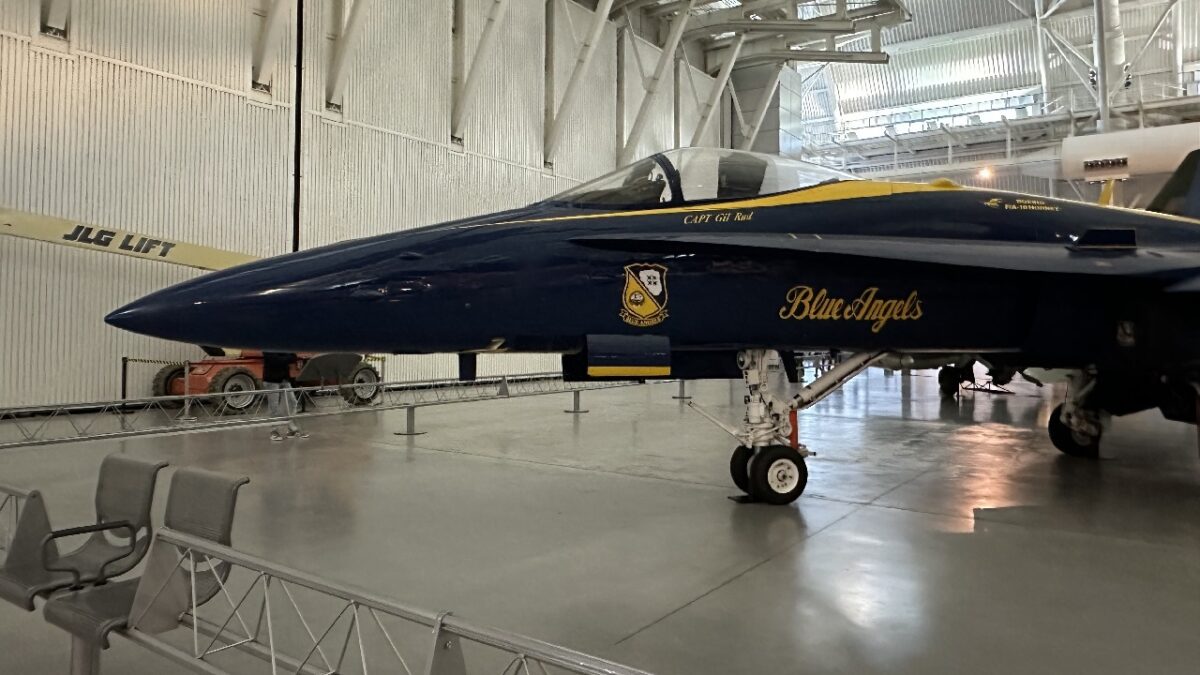
F/A-18 Hornet. The image was taken at National Air and Space Museum on October 1, 2022. Image by 19FortyFive.
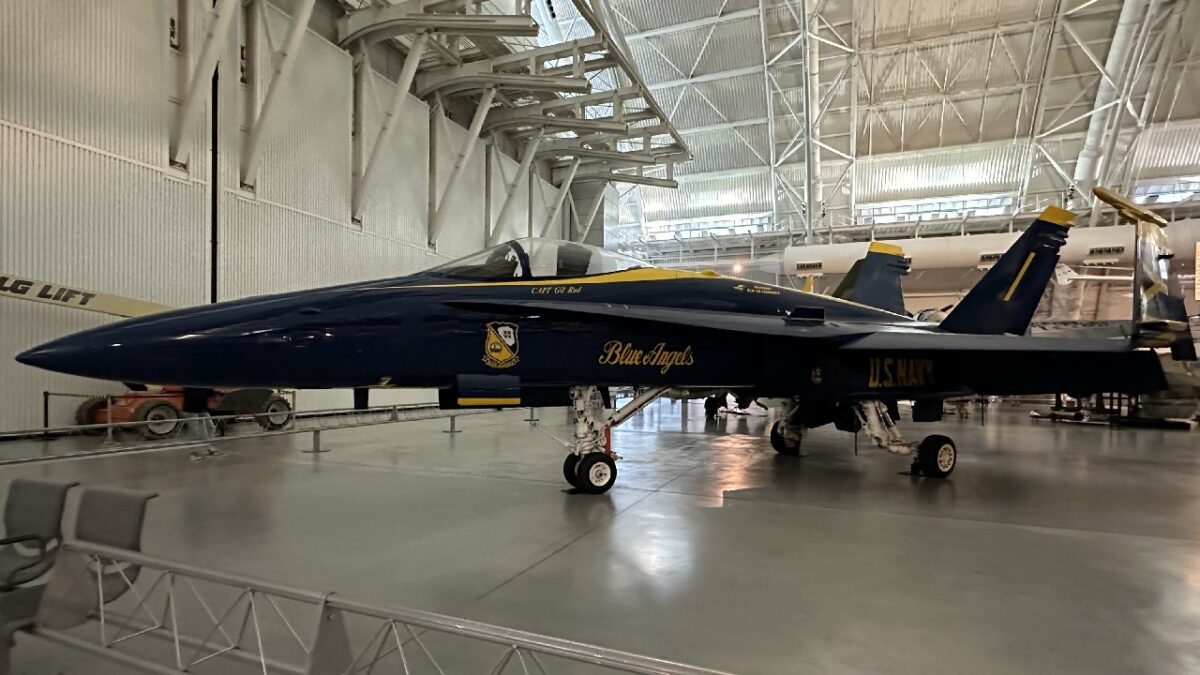
F/A-18 Hornet. The image was taken at National Air and Space Museum on October 1, 2022. Image by 19FortyFive.
The F/A-18 was just updated, too; new “Block III” Hornets are now entering service. “The new Block III Hornet features improved network capabilities to provide the pilot with increased data,” I wrote. “Information sharing is becoming a prerequisite for modern airframes. Accordingly, the Block III was designed with new gadgets to collect and share information.” While the new Block III does not feature stealth technology, the jet is sufficiently equipped to assist naval operations for decades to come. The F/A-18, despite being something of a heritage platform, a Cold War relic, is simultaneously the plane of the future.
Bonus: A Photo Essay
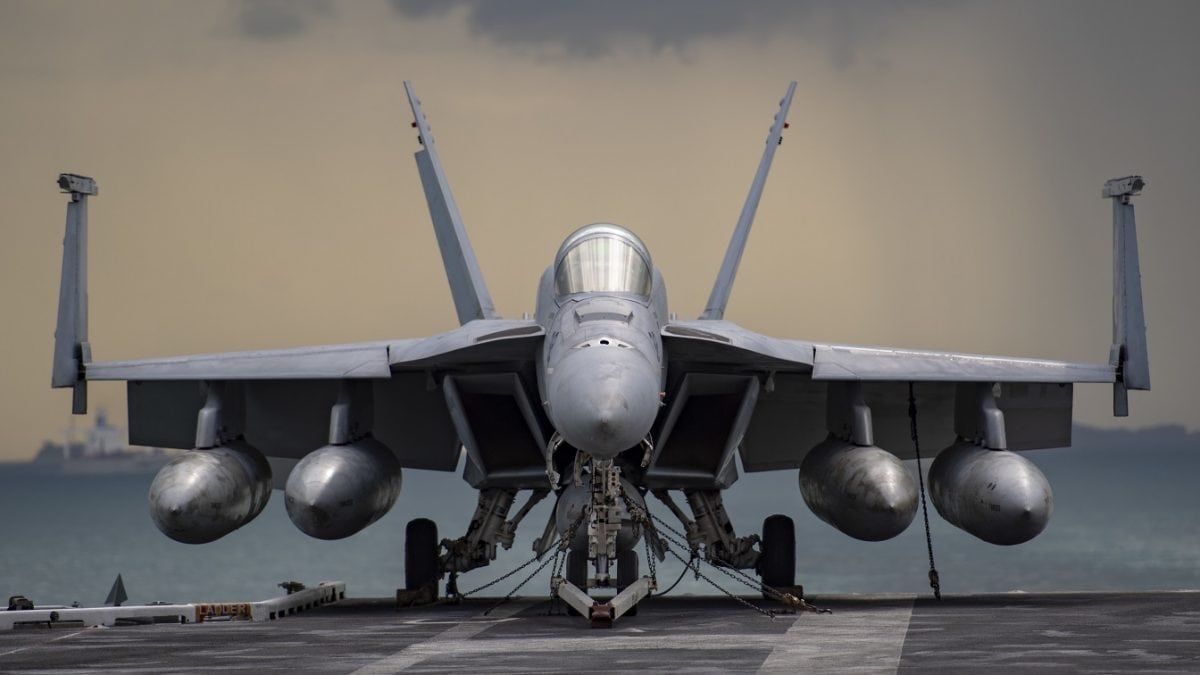
A (Feb. 5, 2021) An F/A-18E Super Hornet, from the “Kestrels” of Strike Fighter Squadron (VFA) 137, rests on the flight deck of the aircraft carrier USS Nimitz (CVN 68) during a strait transit. Nimitz is part of the Nimitz Carrier Strike Group and is deployed conducting maritime security operations and theater security cooperation efforts. (U.S. Navy photo by Mass Communication Specialist 3rd Class Elliot Schaudt/Released)
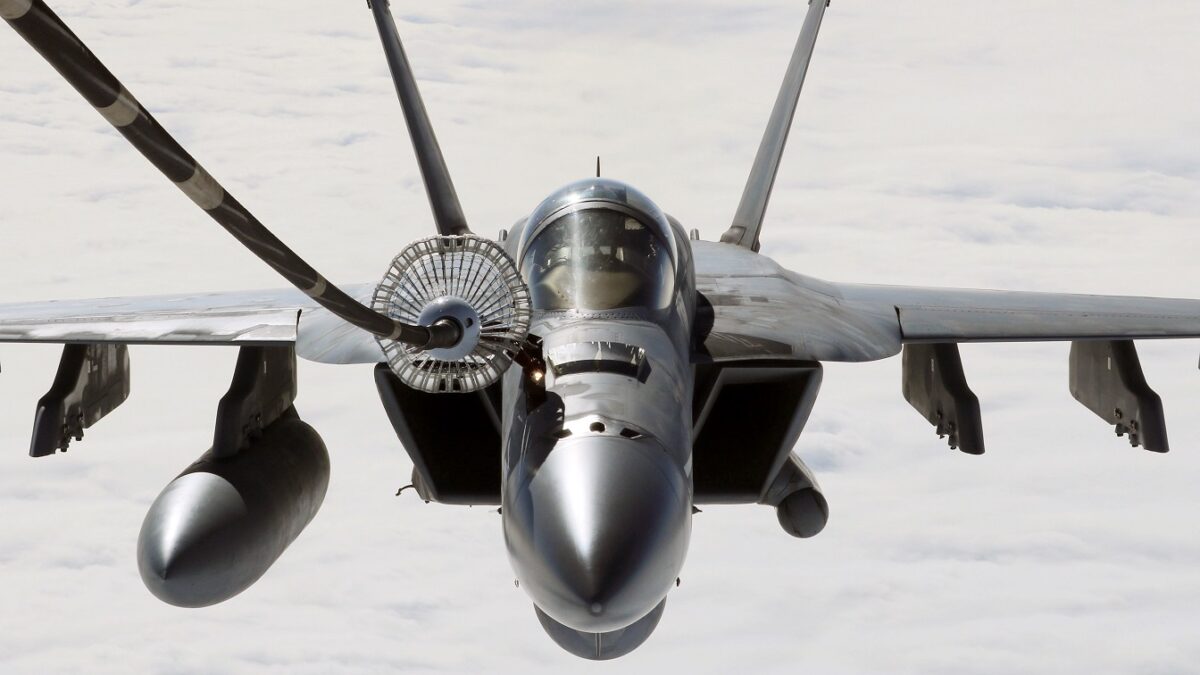
PACIFIC OCEAN (Feb. 26, 2017) An F/A-18E Super Hornet assigned to the “Eagles” of Strike Fighter Squadron (VFA) 115 conducts aerial refueling operations with a U.S. Air Force KC-10A Extender. VFA-115 is traveling from Naval Air Facility Atsugi, Japan, to Naval Air Station Fallon, Nevada, to complete the strike fighter advanced readiness program. (U.S. Navy photo by Lt. Chris Pagenkopf/Released)170226-N-CF980-006
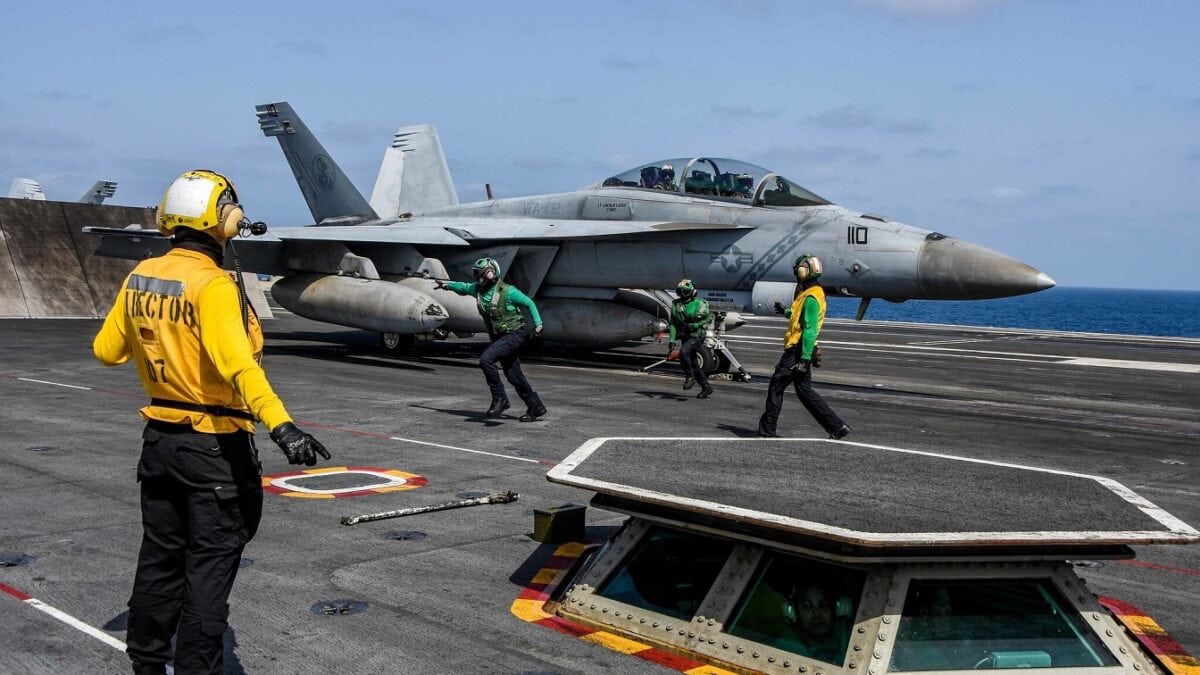
ARABIAN SEA (June 28, 2021) Sailors prepare an F/A-18F Super Hornet attached to the “Diamondbacks” of Strike Fighter Squadron (VFA) 102 for launch on the flight deck of the aircraft carrier USS Ronald Reagan (CVN 76) during flight operations in the Arabian Sea, June 28, 2021. Ronald Reagan is deployed to the U.S. 5th Fleet area of operations in support of naval operations to ensure maritime stability and security in the Central Region, connecting the Mediterranean and Pacific through the western Indian Ocean and three strategic choke points. (U.S. Navy photo by Mass Communication Specialist Seaman Oswald Felix Jr.) 210628-N-BR419-1062
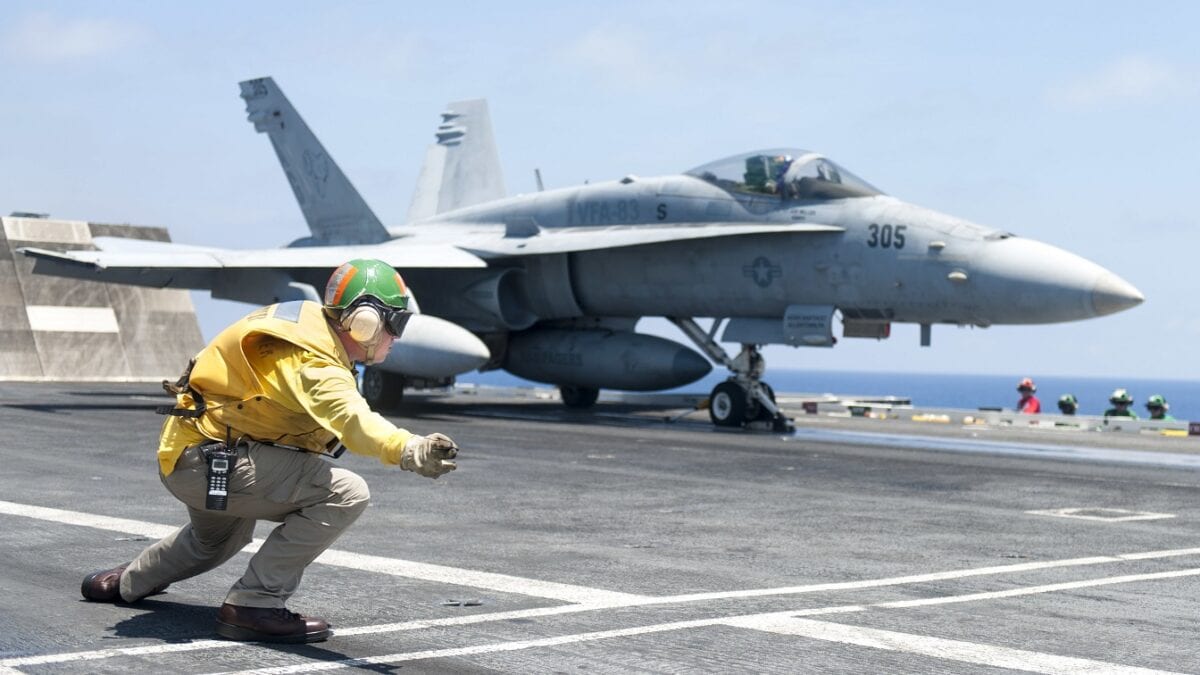
(June 15, 2015) Lt. B. J. Burnham signals to launch an F/A-18C Hornet, assigned to the “Rampagers” of Strike Fighter Squadron (VFA) 83, on the flight deck of aircraft carrier USS Harry S. Truman (CVN 75). Truman is underway conducting Tailored Ship’s Training Availability (TSTA) off the east coast of the United States. TSTA is the first combined training event of a ship’s inter-deployment training cycle that tests and evaluates shipboard drills, including general quarters, damage control, medical and firefighting. Upon successful completion of TSTA, Truman will be considered proficient in all mission areas. (U.S. Navy photo by Mass Communication Specialist 2nd Class K. H. Anderson/Released)
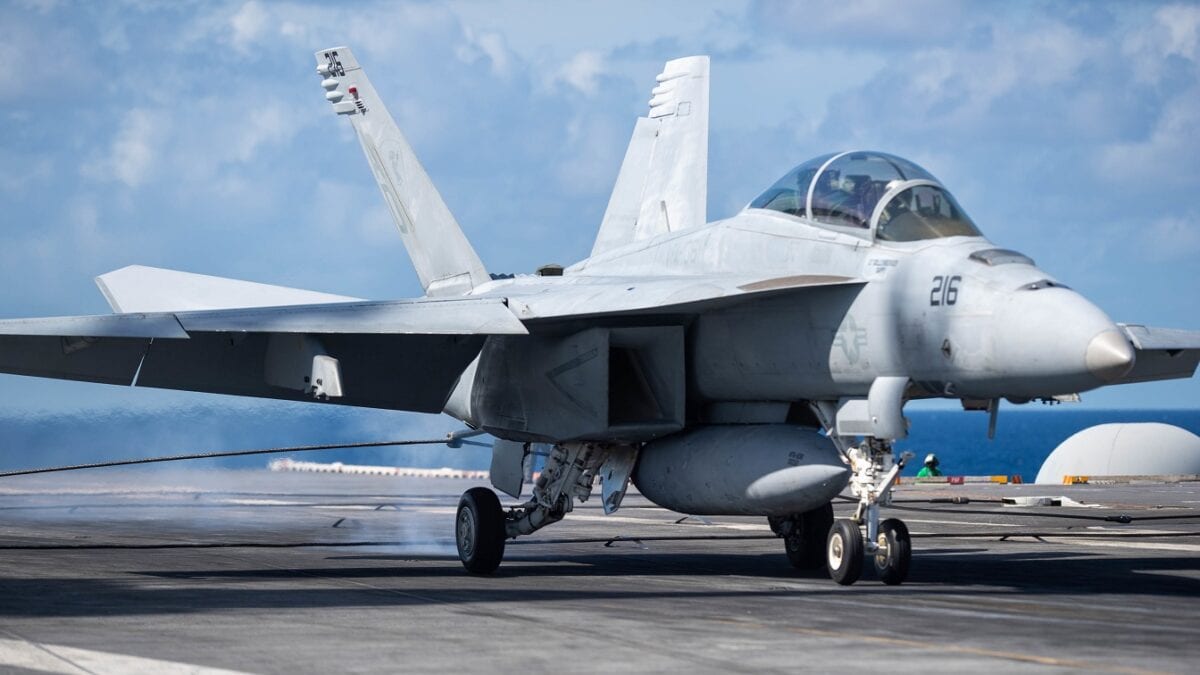
An F/A-18F Super Hornet, assigned to Strike Fighter Squadron (VFA) 106, catches an arresting gear wire while landing on the flight deck of the aircraft carrier USS John C. Stennis (CVN 74) in the Atlantic Ocean, Nov. 4, 2019. The John C. Stennis is underway conducting routine operations in support of Commander, Naval Air Force Atlantic. (U.S. Navy photo by Mass Communication Specialist 2nd Class Grant G. Grady)
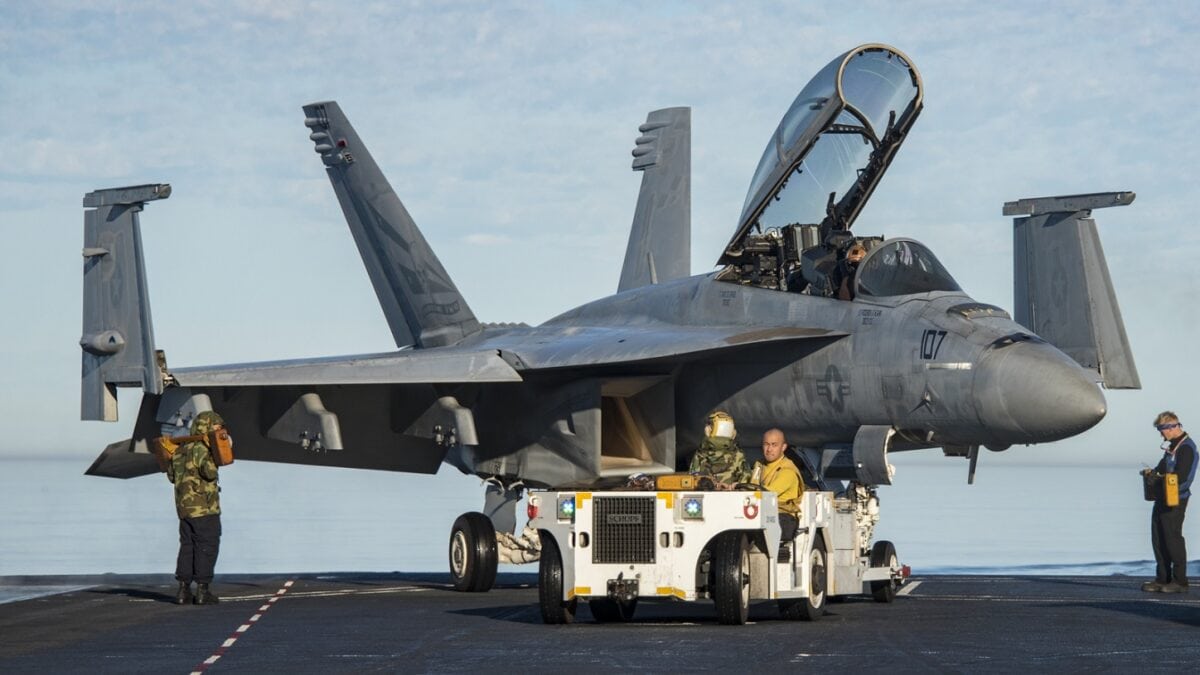
(Jan. 8, 2017) Sailors assigned to the aircraft carrier USS Carl Vinson (CVN 70) transport an F/A-18F Super Hornet from the “Bounty Hunters” of Strike Fighter Squadron (VFA) 2 across the flight deck. The Carl Vinson Carrier Strike Group (CSG) will report to U.S. 3rd Fleet, headquartered in San Diego, while deployed to the western Pacific as part of the U.S. Pacific Fleet-led initiative to extend the command and control functions of 3rd Fleet into the region. (U.S. Navy photo by Mass Communication Specialist 2nd Class Sean M. Castellano/Released)
Harrison Kass is a Senior Defense Editor at 19FortyFive. An attorney, pilot, guitarist, and minor pro hockey player, he joined the US Air Force as a Pilot Trainee but was medically discharged. Harrison has degrees from Lake Forest College, the University of Oregon School of Law, and New York University’s Graduate School of Arts & Sciences. He lives in Oregon and regularly listens to Dokken.

